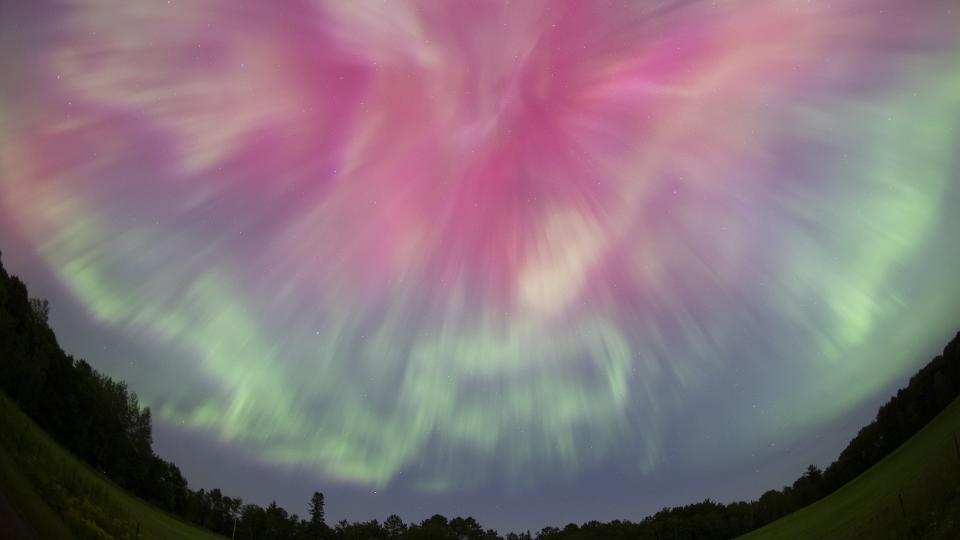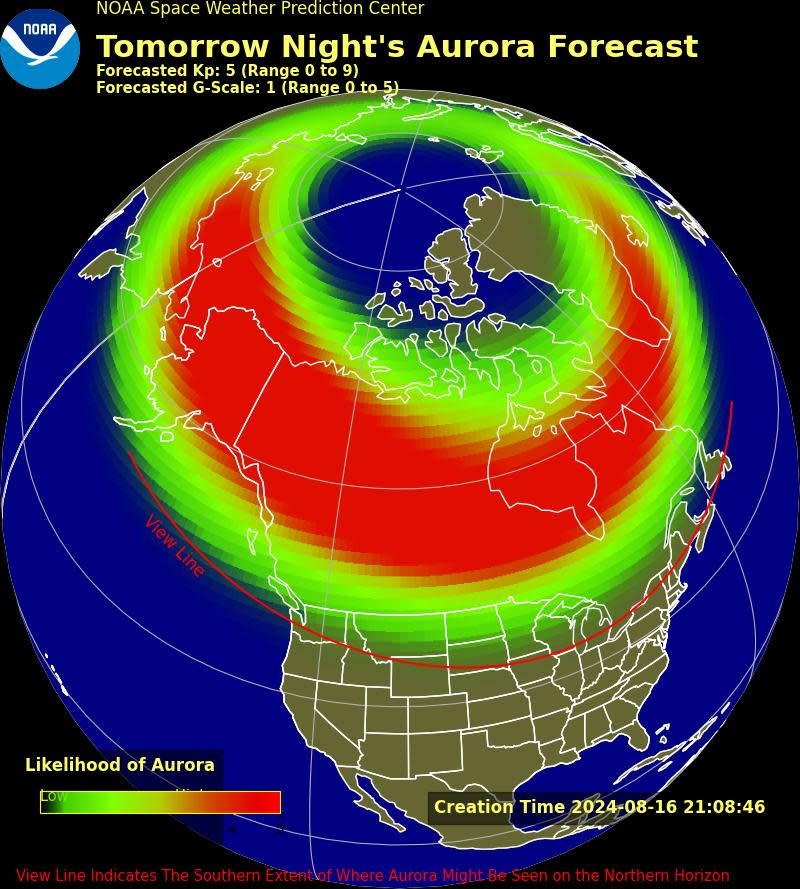When you buy through links on our articles, Future and its syndication partners may earn a commission.

Aurora chasers may be in for a treat once again this weekend as an enormous blob of charged particles barrels toward our planet in the wake of a colossal X-class solar flare.
The packet of particles, called a coronal mass ejection (CME), looks poised to hit Earth sometime between Saturday night (Aug. 17) and early Sunday morning (Aug. 18), according to the National Oceanic and Atmospheric Administration’s (NOAA) Space Weather Prediction Center.
This collision will trigger a minor to moderate geomagnetic storm — a disturbance in Earth’s magnetic field — that could briefly disrupt certain satellite operations, trigger radio blackouts, and push the northern lights to lower latitudes than usual.
NOAA isn’t certain when the CME will strike or how strong it will be, but the agency predicts that auroras may become visible in the states along the U.S.-Canada border beginning Saturday night. Auroral activity may increase going into Sunday, depending on the strength of the incoming solar eruption.
The CME currently headed our way launched from the sun on Aug. 14, following the eruption of a gargantuan X-class solar flare — the most powerful class of solar outburst. Flares occur when tangled magnetic-field lines in the sun’s atmosphere suddenly snap and reconnect, shooting powerful blasts of electromagnetic radiation into space. Powerful flares may be accompanied by CMEs, which ooze through space more slowly than flares and usually reach Earth several days after the solar outbursts.
Related: 32 stunning photos of auroras seen from space


Earth’s magnetic field mostly protects us from the barrage of charged particles that make up CMEs (with some major exceptions, like the infamous Carrington Event of 1859). As those particles skate along our planet’s magnetic-field lines, they charge up and excite molecules in the atmosphere, causing them to emit energy as colorful light — better known as auroras.
RELATED STORIES
—’Severe’ G4 geomagnetic storm strikes Earth, making widespread auroras likely
—Colossal X-class solar flare erupts from ‘rule-breaking’ sunspot — and Earth is in the firing line
—’We’ll be studying this event for years’: Recent auroras may have been the strongest in 500 years, NASA says
Solar flares, CMEs and auroras are more common during solar maximum, the peak of the sun’s 11-year activity cycle. Scientists initially predicted that the current cycle’s peak would begin in 2025, but there are signs that it may already be upon us. Even if this weekend’s auroral display eludes you, expect more chances to view the northern lights in the months to come.
To view auroras, head as far from artificial light sources as possible, using a dark-sky map if necessary. Auroras are visible with the naked eye, but a smartphone camera should be able to capture the atmospheric light show with even greater sensitivity. A good astrophotography camera can also work wonders.
Source Agencies


